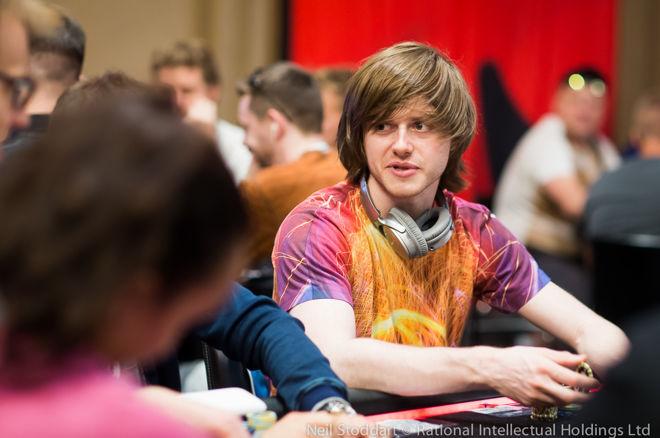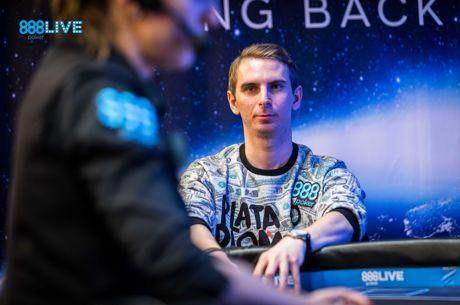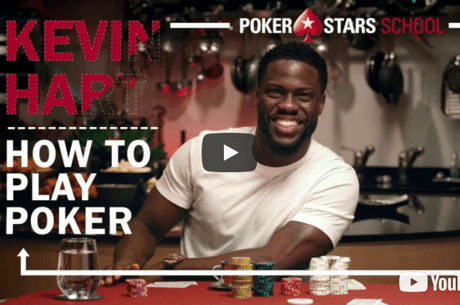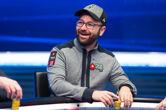Charlie Carrel Talks About a Live Read in the WSOP Europe HR One Drop

Recently, on the poker podcast The Chip Race, high-stakes poker player Charlie Carrel talked about a hand he played in the �111,111 buy-in 2017 WSOP Europe High Roller for One Drop. This hand involved some live reads on which Carrel based a big decision.
If you haven't heard of me, my name's Zachary Elwood. I've written three books about poker tells and also have a video series. In this article, I'll give a synopsis of what happened, based on Carrel's interview, and then talk a little bit about the behaviors and tells Carrel mentions.
The Hand
To set the scene, this hand occurred on Day 1 of the One Drop with the blinds around 15,000/30,000. (Carrel talked about this hand long after it happened, so there are some approximations.)
Paul Newey, a regular player of high-rollers who's known for being pretty tight, raised from the "lojack" position (the spot before the hijack). A rich recreational player then three-bet from the button to 165,000. This gentleman had quite a loose image, according to Carrel.
Carrel, with 3.2 million in the small blind, decided to four-bet to 425,000 with A?K?. He says this was mainly an exploitative decision, as he put his opponent on a pretty wide range, and he also chose a smaller bet-size to induce calls. His opponent did indeed call.
The pot was now around 1 million, and Carrel's opponent had 1.675 million behind.
The flop came 6?2?2?. Carrel decided to bet, as he thought his opponent range was very wide and that he'd be floating just about everything. He bet 275,000.
His opponent went into the tank for at least a minute-and-a-half, which Carrel describes as "really strange." This tank made it very likely, in Carrel's opinion, that Carrel was ahead.
He'd built some rapport with his opponent, and thought he knew him pretty well. He definitely didn't seem the type to tank-call with strong hands, as tank-calling in such a spot with strong hands would seem a pretty weird or amateurish (or jerky) thing to do, all things considered. And Carrel thought with his pair-type hands he would just call in more of a normal time, not tank-call. Same with his flush draws.
Eventually he did call, and Carrel felt confident going to the turn that he was ahead. The pot had reached 1.55 million, and Carrel's opponent had 1.4 million behind.
The turn was the 5?, making the board 6?2?2?5?. Carrel checked, and his opponent bet 800,000, leaving himself 600,000 behind.
The sizing worried Carrel. He was expecting smaller bet-sizing from missed floats on the turn, something more like 550,000 or so. The sizing lowered Carrel's confidence that he was ahead. So he decided to talk to try to get some information.
The reason he thought talking might bear some fruit is that the two of them had been joking around earlier in the tournament, and as mentioned they had established some rapport. He was a chatty guy �� friendly, but with a little bit of ego as well.
So Carrel talked for a bit. And after a whole minute, his opponent had still not said a word. Carrel interpreted this as likely to indicate weakness. He thought, considering what he knew of the guy's personality, that if he actually had a pair (which he'd likely know was good based on Carrel's talking here), he would be likely to respond.
As Carrel says, "It is so difficult when someone you have rapport with is speaking to you [in a friendly way]. It's so difficult to just ignore them and pretend they're not there, and to keep that gruff face. I really felt if he had value hands, I gave it a high likelihood �� like 75 to 80 percent likelihood �� that he would end up speaking in a jocular, jesty fashion."
Carrel then called the clock on himself, as he thought this would be amusing and maybe yield some more information. His opponent then smiled, but it was a smile Carrel called the "final nail in the coffin." Carrel thought it was not a comfortable smile. Considering this man's previous demeanor, Carrel thought it was likely he would display more enjoyment at scooping a decent-sized pot at this point in the tournament.
Putting all these pieces together, Carrel opted to shove, putting his opponent to the test for his remaining 600,000. He snap-folded.
The Tank-Call
I have a few thoughts on the various behaviors Carrel notes in this hand.
First, most fairly experienced and straightforward players don't make a habit of doing deceptive or weird things like tank-calling with a fairly straightforward decision. This is especially true if they're playing an opponent they respect. They don't want to be perceived as holding up the game, or of being underhanded.
For this reason, in some contexts a tank-call like this can make it very likely the person has an actual decision. As Carrel says, he thought the tank-call here meant the guy didn't have any pair hand, as he'd likely call in a more normal time.
Also, in the same context, an experienced player will generally not tank-call in such a spot with a strong hand, as he might look silly or underhanded later. Obviously there are some players who will do this, but for the most part, mutual respect between players generally keep such weird or tricky deceptions from happening.
Like many of the more subtle tells, this one will usually be based on how well you know the player in question. For example, if it were a stranger, for all you know the player could often take a long time in random spots. Or the player might often do deceptive things when strong.
A final note on this: these thoughts wouldn't apply to a tank-shove here, as seeming uncertain and then betting/raising will generally make a strong hand more likely.
Silence
Generally, talking from a bettor will be much more meaningful than that bettor's silence. This is because silence is the norm; it's usual for all bettors to remain silent, whether they have a strong hand or are bluffing. The information usually only comes in the form of talking. Sometimes there are clues in a player's talking that makes it likely they are relaxed.
In my books and videos, I often say, "the lack of a tell is not necessarily a tell." That idea is generally also true about silence. In general, in a vacuum, there is not much information to be found about a bettor's silence.
But in Carrel's case, the hand was not occurring in a vacuum. For one thing, he had a good sense of this player's mannerisms. He knew he was personable and jocular, with a little bit of ego. He'd seen him joke around verbally with people in several spots. He also knew he was a wealthy guy who probably wouldn't be as guarded as would a more serious player who cared more about the money.
Besides that basic information, Carrel was actively trying to induce behavior with his own talking and questioning. Talking to an opponent makes it more likely the player will interact with you. As Carrel explained, he thought it was very likely that this player, if he were relaxed and had a decent hand, wouldn't be able to resist responding in some way.
In Exploiting Poker Tells, following up on the point that the lack of tells is not necessarily a tell, I say, "The more frequent a tell is, the more meaning its absence contains." In this case, Carrel thought this player's tell of talking with a good hand would be very frequent, so therefore the lack of talking would be likely to contain some meaning.
The Uncomfortable Smile
When considering smiles from a player making a significant bet, it is generally only the biggest and most dynamic smiles that are the most meaningful. Those smiles will pretty reliably indicate relaxation.
On the other hand, small smiles from bettors are generally much harder from which to get information. This is for the same reason that silence is generally hard to read �� bettors with both strong hands and weak hands are easily capable of putting on small smiles.
Similar to a bettor's silence, information from a small smile will only be possible when you have a player-specific read. In this case, Carrel thought this gentleman, if he knew he were ahead, wouldn't be able to resist a loose, unguarded reaction to Carrel calling the clock on himself. If this were a vacuum, with an unknown player, that would be a very tough read to make with any confidence.
Conclusion
All of the behaviors discussed above were more actionable because Carrel knew his opponent was fairly recreational and not super-serious about the game. This aspect made it easier for Carrel to act on these reads.
If this hand had been against a very skilled live opponent, it probably would have been more difficult to reach a confident conclusion, just because skilled players are more capable of being balanced with their behavior and occasionally being tricky.
You can hear the full interview on The Chip Race, season 4, episode 4. Here are some links for the podcast:
- Carrel's interview on YouTube
- The Chip Race podcast on iTunes and SoundCloud
- Transcription of interview on my site
And on Twitter you can follow @TheChipRace and @CharlieCarrel.
Zachary Elwood is the author of three books about poker tells, and the creator of a poker tells video series. He has served as a consultant for two WSOP Main Event final table players. You can follow him on Twitter at @apokerplayer.









